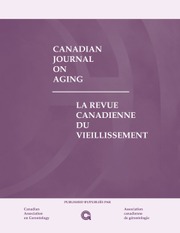Article contents
Drug and Natural Health Product Data Collection and Curation in the Canadian Longitudinal Study on Aging
Published online by Cambridge University Press: 25 January 2024
Abstract
This study aimed to develop an efficient data collection and curation process for all drugs and natural health products (NHPs) used by participants to the Canadian Longitudinal Study on Aging (CLSA). The three-step sequential process consisted of (a) mapping drug inputs collected through the CLSA to the Health Canada Drug Product Database (DPD), (b) algorithm recoding of unmapped drug and NHP inputs, and (c) manual recoding of unmapped drug and NHP inputs. Among the 30,097 CLSA comprehensive cohort participants, 26,000 (86.4%) were using a drug or an NHP with a mean of 5.3 (SD 3.8) inputs per participant user for a total of 137,366 inputs. Of those inputs, 70,177 (51.1%) were mapped to the Health Canada DPD, 20,729 (15.1%) were recoded by algorithms, and 44,108 (32.1%) were manually recoded. The Direct algorithm correctly classified 99.4 per cent of drug inputs and 99.5 per cent of NHP inputs. We developed an efficient three-step process for drug and NHP data collection and curation for use in a longitudinal cohort.
Résumé
Cette étude visait à développer un processus efficace de collecte et de recodage des données de tous les médicaments et produits de santé naturels (PSN) utilisés par les participants de l’Étude longitudinale canadienne sur le vieillissement (ELCV). Le processus séquentiel en trois étapes consistait à : 1) jumeler les médicaments colligés dans le cadre de l’étude avec les données de la Base de données sur les produits pharmaceutiques (BDPP) de Santé Canada, 2) recoder par algorithmes les médicaments et PSN non jumelés, et 3) recoder manuellement les médicaments et PSN non jumelés. Parmi les 30 097 participants de la cohorte globale de l’ELCV, 26 000 (86,4 %) utilisaient un médicament ou un PSN avec une moyenne de 5,3 (écart-type 3,8) médicaments ou PSN par participant-utilisateur pour un total de 137 366 médicaments ou PSN. Parmi ces médicaments ou PSN, 70 177 (51,1 %) ont été jumelés avec la BDPP de Santé Canada, 20 729 (15,1 %) ont été recodés par des algorithmes et 44 108 (32,1 %) ont été recodés manuellement. L’algorithme Direct a correctement classé 99,4 % des médicaments et 99,5 % des PSN. Nous avons développé un processus efficace en trois étapes pour la collecte et le recodage de médicaments et de PSN dans une cohorte longitudinale.
Keywords
- Type
- Article
- Information
- Canadian Journal on Aging / La Revue canadienne du vieillissement , Volume 43 , Issue 3 , September 2024 , pp. 446 - 452
- Copyright
- © Canadian Association on Gerontology 2024
Footnotes
The original version of this article was missing details in the Acknowledgements section. A notice detailing this has been published and the information added to the online PDF and HTML versions.
References
An addendum has been issued for this article:
- 1
- Cited by
Linked content
Please note an has been issued for this article.



